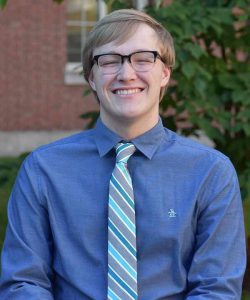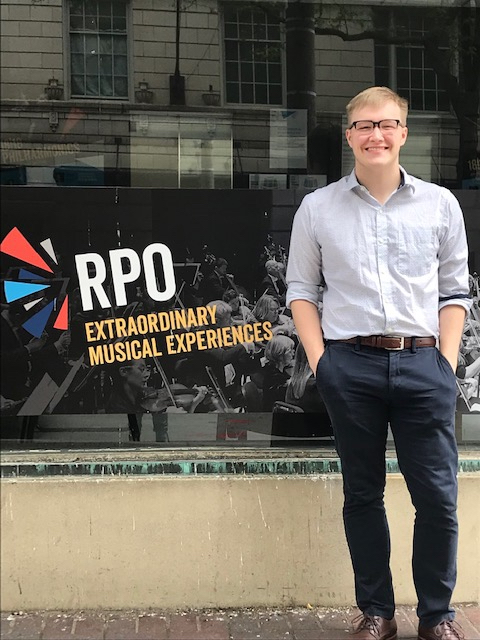By: Bryce Davis, Humanities for Life Intern
Hey, everyone! My name is Bryce Davis, and I’m a rising senior at the U of R originally from Wellsville, NY (about an hour and a half south of Rochester). At the University I’m double majoring in economics and music with a pop and jazz studies concentration. I’m also the historian of the Midnight Ramblers, an a cappella group on campus. This summer I’ve been so lucky to be a part of an absolutely incredible program – Humanities for Life!

Humanities for Life is a new summer internship program offered for undergraduate students on the River Campus interested in working in the non-profit and, you guessed it, humanities sector after graduation. The program matches Rochester students with internships at humanities non-profits in Rochester. These internships are paid, thanks to a grant from the Mellon Foundation, enabling organizations that may not have been able to support a paid position to have one, while simultaneously increasing access for students. Humanities for Life started last year with seven partner organizations such as WXXI and The Strong, and this year expanded to include organizations such as the Rochester Philharmonic Orchestra (RPO), where I’m spending my summer!

Going through the application process for Humanities for Life was straightforward thanks to Handshake (UR’s career network/portal) and assistance from the Greene Center, and I knew after my interviews that I would be happy to work for any of the great organizations involved with the program. However, the RPO was my top choice – luckily for me, I was theirs too! We were matched, and I started work as a business development intern in late May.
Since then, I’ve done plenty of work – the orchestra’s season and fiscal year end in June, so there’s been lots of letters to send, grants to reapply for, and events to plan. I’ve had plenty of opportunities to work directly with top executives on a wide variety of projects, and I’ve gotten to see lots of different processes and the ways in which they interact. One of the great things about working at the RPO (and the rest of the organizations involved as HFL partners) is that the outcomes involve the Rochester community. For example, I’ve been heavily involved in planning and marketing the RPO’s summer concert series, where the orchestra steps outside of Eastman Theatre and plays around Rochester and the surrounding counties. Being able to see these events through to the final product of a community-oriented event is extremely rewarding.
I haven’t even gotten to one of the best parts of Humanities for Life – the circuit. The circuit refers to a gathering of the 15 interns; we get together on a regular basis to tour the other internship locations, see what the other interns are working on, and learn more about the Rochester humanities and non-profit communities as a whole. The first circuit event was at the Memorial Art Gallery. We met in the Brown Hound, a restaurant housed inside of the MAG, and got to know each other while enjoying some excellent eats.

We were then treated to a guided tour of the gallery, led by the MAG’s Director of Academic Programs, Marlene Hamann-Whitmore. We spent a good amount of time examining and discussing a work by American painter Kehinde Wiley (best known for his portrait of Barack Obama). After Memling’s Portrait of a Man with a Letter takes a Renaissance convention of the devotional portrait, an artform reserved for those who could afford to commission such a work, and places a Black man as the sitter within its pastoral setting. The tension between the street culture of the sitter and the “high art” expectations associated with the medium is the conceit of the piece, and it’s one that generates a lot of questions, like any great artwork.

(Memorial Art Gallery) Kehinde Wiley, After Memling’s Portrait of a Man with a Letter (2013)
After the tour, we were left to wander the museum ourselves. I stumbled upon a work by Nam June Paik, who I recognized from my music history classes as a collaborator of John Cage. One of the things that drew me to the Humanities for Life program was the possibilities for these interdisciplinary connections with things I learned in the classroom, so I loved being able to make that link.

All in all, the Humanities for Life program has already proven to be a great choice for me, and it’s a program I’d recommend exploring to any Rochester undergrad interested in the humanities. I’m excited to grow closer with this cohort of incredibly talented interns, and to continue to learn more about the Rochester community. Meliora!
